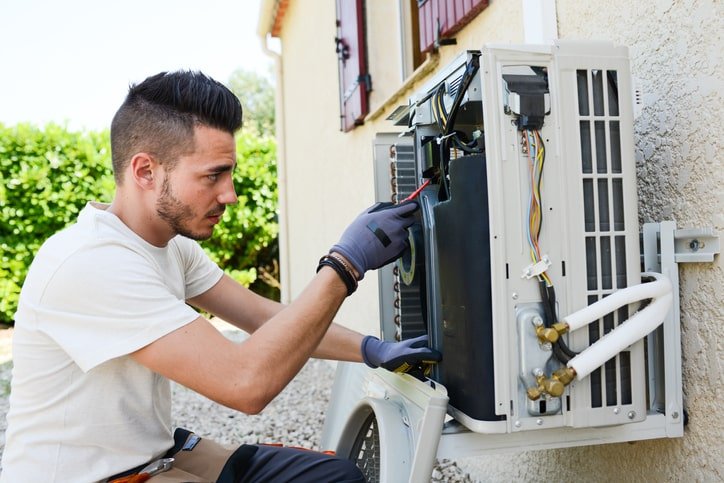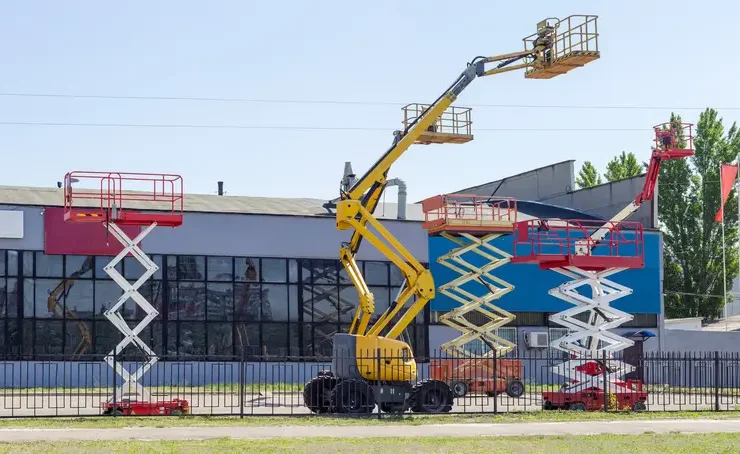There are quite a few HVAC hazards that can cause issues in a home or a workplace. That’s why the HVAC industry in the United States is worth more than 297 billion USD as of this writing. That’s because it is necessary to prevent HVAC hazards and potential health risks.
Now, there are various ways to tackle these HVAC safety hazards and we’re going to talk about some of them today. Today, we’re looking at five common hazards in workplaces and what you can do about them including effective HVAC hazards and control measures.
Hazard 1: Poor Indoor Air Quality
Poor indoor air quality (IAQ) is a significant concern often raised by experts of HVAC hazards. That’s why it can become a source of various pollutants that linger in the air when the HVAC system isn’t properly cared for.
OSHA has strict guidelines and regulations regarding Indoor Air Quality. That’s why it’s a necessity to avoid health risks caused by it. Here are a few ways to tackle them:
- Replace air filters regularly to trap airborne pollutants effectively.
- Clean air ducts to remove dust and mold buildup.
- Ensure proper ventilation for fresh outdoor air circulation.
- Use air purifiers to capture and filter out additional contaminants.
- Keep indoor plants to naturally filter and improve air quality.
- Minimize the use of chemical-based cleaning products to reduce pollutants.
- Manage indoor humidity to avoid the development of mold and mildew.
Several factors contribute to poor IAQ, and one primary factor is a clogged or dirty air filter. When filters are not replaced regularly, they lose their effectiveness in trapping pollutants. Dirty air ducts can harbor mold and dust, further compromising air quality and emphasizing the importance of proper ventilation and air conditioning.
Inadequate ventilation exacerbates the problem by preventing the fresh outdoor air from replacing the stale indoor air. That’s why it’s important to adopt preventive measures to combat poor IAQ. And organizations or companies can significantly reduce the risks associated with poor indoor air quality and create a healthier living or working environment by addressing these key aspects.
Hazard 2: Carbon Monoxide Leaks
Carbon monoxide (CO) leaks represent a serious hazard in indoor environments. Carbon monoxide is a colorless, odorless gas that, when inhaled, can lead to harmful health effects. It is found in appliances such as gas furnaces, stoves, and water heaters. To mitigate this risk, understanding HVAC hazards and control measures is crucial for maintaining a safe indoor environment.
The danger lies in its silent nature and without a distinctive smell or color that makes it one of the most prominent HVAC safety hazards. it often goes unnoticed until symptoms of CO poisoning appear. And that’s why it’s important to battle it by:
- Installing CO detectors for early warning of dangerous gas levels;
- Scheduling regular professional inspections for heating systems and appliances;
- Ensuring proper ventilation to allow CO to disperse safely;
- Using appliances that vent outside and follow safety guidelines;
- And educating workers or occupants on CO symptoms and emergency response procedures.
It’s also important to have carbon monoxide detectors in the workplace or home space. Individuals can not only ensure their homes or offices are safer with this but also avoid operational hazards of HVAC maintenance while reducing the risks of carbon monoxide leaks, emphasizing the significance of a well-implemented HVAC safety plan.
Hazard 3: Electrical Issues
Electrical issues in HVAC systems are a risk, and common electrical problems may include faulty wiring or loose connections and issues with electrical components like capacitors and relays. These problems can arise due to poor installation or inadequate maintenance. Understanding HVAC hazards and control measures is essential for ensuring the safety and efficiency of your HVAC system.
Electrical malfunctions can lead to serious consequences when not addressed promptly. This includes system failure and potential safety hazards, so here’s how to deal with them:
- Schedule regular professional HVAC system inspections for electrical components;
- Address flickering lights or unusual noises promptly to prevent issues;
- Hire qualified technicians for proper installation of HVAC electrical systems;
- Tighten loose connections to ensure safe and reliable electrical performance;
- And replace aging or faulty components during routine maintenance checks.
Regular maintenance not only enhances the longevity of the equipment but also minimizes the risk of electrical malfunctions. That’s why professional installation and regular maintenance are crucial in preventing and addressing electrical hazards, following HVAC safety guidelines.

Hazard 4: Refrigerant Leaks
Refrigerant leaks in HVAC systems pose a risk to both the equipment and the environment, as refrigerants are substances responsible for cooling air within the system. When a leak occurs, these substances escape into the atmosphere, potentially causing harm. To address this issue, understanding HVAC hazards and implementing effective control measures is crucial for system safety and environmental protection.
While refrigerants help maintain comfortable indoor temperatures, they can be harmful if inhaled. So, here’s how a workplace can battle out issues like this:
- Schedule regular HVAC maintenance to detect and address potential leaks;
- Guarantee the correct installation and insulation of refrigerant lines;
- Train technicians in responsible refrigerant handling and disposal practices;
- And install leak detectors to identify and address issues early on.
Common causes of refrigerant leaks include worn-out connections or corrosion and physical damage to the refrigerant lines. Detecting a leak can be challenging as refrigerants are often colorless and odorless. Signs may include reduced cooling efficiency or ice buildup on the refrigerant lines.
Hazard 5: Combustion-related Hazards
Combustion-related hazards in HVAC systems involve the process of burning fuel for heat. These hazards primarily affect heating systems and can lead to safety concerns if not managed properly. Common combustion-related issues include problems with burners, pilot lights, or gas valves.
So, here are a few expert-suggested tips to avoid combustion-related hazards:
- Schedule regular professional HVAC inspections for combustion system maintenance;
- Ensure proper ventilation for safe exit of combustion byproducts;
- Monitor flames for consistent color and patterns during system operation;
- Address any unusual smells promptly with professional assistance;
- And educate occupants on recognizing signs of combustion-related issues for awareness.
Regular maintenance of heating systems is crucial to prevent combustion-related hazards. Technicians inspect and clean burners, ensuring they operate efficiently and safely. They also check for proper ventilation to allow combustion byproducts to exit the system.
Conclusion
These are some of the common HVAC hazards and potential safety risks in workplaces and homes. It’s important to abide by OSHA regulations for workplace enforcers while homeowners should use the checklists and tips provided in this article.


